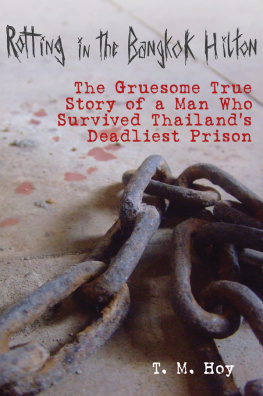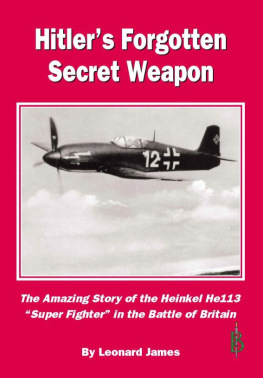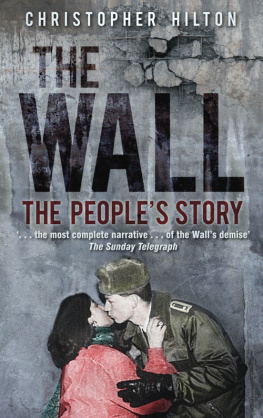HITLERS SECRET WAR IN SOUTH AMERICA, 19391945
HITLERS SECRET WAR IN SOUTH AMERICA 19391945
German Military Espionage and Allied Counterespionage in Brazil
Stanley E. Hilton
Louisiana State University Press
Baton Rouge
Copyright 1981 by Louisiana State University Press
All rights reserved
Manufactured in the United States of America
Louisiana Paperback Edition, 1999
08 07 06 05 04 03 02 01 00 99
5 4 3 2 1
Designer: Patricia Douglas Crowder
Typeface: Linotron 202 Sabon
Typesetter: G & S Typesetters, Inc.
LIBRARY OF CONGRESS CATALOGING-IN-PUBLICATION DATA
Hilton, Stanley E 1940
Hitlers secret war in South America, 19391945.
Bibliography: p.
Includes index.
ISBN 0-8071-2436-2 (pbk.)
1. World War, 19391945Secret serviceGermany. 2. World War, 19391945Brazil. 3. BrazilHistory19301954. 4. Hitler, Adolf, 18891945. I. Title. D810.S7H47 940.54'87'43 80-17726
The paper in this book meets the guidelines for permanence and durability of the Committee on Production Guidelines for Book Longevity of the Council on Library Resources.

To Angela, Dale, and Alan
for helping to make it all worthwhile
And the Lord spake unto Moses, saying
Send thou men, that they may search the land of Canaan.
And Moses sent them to spy out the land of Canaan, and said unto them, Get you up this way southward, and go up into the mountain:
And see the land, what it is; and the people that dwelleth therein, whether they be strong or weak, few or many;
And what the land is that they dwell in, whether it be fat or lean, whether there be wood therein, or not. And be ye of good courage.
Numbers 13:12, 1719
Better lose a battle than lose a source of secret intelligence.
Sir William Stephenson, chief of
British Security Coordination, 194045
Contents
List of Illustrations
HITLERS SECRET WAR IN SOUTH AMERICA, 19391945
Introduction to the American Edition
IN THE YEARS that followed World War II, hundreds of books were written about different aspects of that unprecedented conflict, but the details of the secret war in the West were slow to appear, in large part because of agreements concluded in 1945 between the American and British governments that forbade the release of information on covert operations, especially in the field of cryptanalysis, that is, the interception and decrypting of enemy radio communications.
It was not until the 1960s that the silence surrounding the secret war of 193945 began to dissipate. In 1962 a high-ranking member of the British intelligence community, Kim Philby, fled to the Soviet Union where he announced that he had been a Communist spy for thirty years. Philby took with him a wealth of confidential information on British secret operations, and it was with the aim of nullifying or minimizing the impact of any public revelations that Philby might make that London decided to authorize the publication of a preliminary study of the British clandestine effort during World War II. That book, written by H. Montgomery Hyde, a former intelligence officer, dealt with the British Security Coordination (BSC), a supersecret organization established in New York in 1940 under the leadership of Sir William Stephenson, whose code name was Intrepid and who directed a large part of the Allies secret offensive. Hydes work was followed in the mid-1960s by two studies of the Special Operations Executive, an agency set up in 1940 by Winston Churchill to set Europe ablaze through sabotage and subversion, and by McLachlans book on British naval intelligence.
After another several years of silence, London acquiesced in the publication in 1972 of the Masterman Report on British counterespionage during the war. Two years later, the British government lifted the veil on what was probably the greatest Allied secret of the war: Ultra, the code name given to the information contained in the highly confidential communications between the German high command and theater commanders, messages that were transmitted by Enigma enciphering machines but which the British, from the early stages of the war on, intercepted and deciphered, thanks to a stolen Enigma machine and a small group of mathematical geniuses. British leaders thus learned Berlins orders at the same time, and sometimes before, German commanders did. The publication of these books cleared the way for additional works that shed new light on the Allies clandestine war: an official biography of Stephenson, based on BSC archives; the memoirs of perhaps the most important double agent of the period; Browns mammoth study of the Allies campaign to deceive the enemy about their plans for an invasion of the European continent; the works by Patrick Beesly and Ewen Montagu on British naval intelligence; and recent books on Ultra by Lewin, Bennett, and Garliski. During this time a considerable part of the missing Abwehr records was located in the vast collection of captured German documents that had been microfilmed and deposited in the National Archives in Washington, D.C. That discovery made possible the publication in 1971 of Ladislas Faragos best-selling study of wartime German military espionage in England and the United States, which has now been superseded by David Kahns massively documented Hitlers Spies.
The past few years, then, have witnessed great strides toward a more complete picture of the secret war in the West during the period 193945. But one significant theater of operationSouth Americahas been overlooked. It was popularly assumed in the United States during the early World War II era that South America, particularly Brazil, where a sizable German colony existed, was a hotbed of Nazi intrigue, or, at the very least, a fertile area for Axis troublemaking. In the 1930s Brazil had been the scene of a intense trade push by Berlin, and many observers by 1938 were seeing political purpose in German commercial success. In a radio address in October of that year, Winston Churchill himself warned that even in South America the Nazi regime begins to undermine the fabric of Brazilian society. a preoccupation that, as this study makes clear, government analysts shared fully. How justified was that concern?
The dramatic scenes of the international crisis in the West were enacted on the European continent and in the British Isles, true, but the fact that the Abwehr erected a complex and wide-ranging espionage apparatus in South America suggests the importance of that region for the German war effort. Brazils strategic significance at the time is often forgotten, but it should be remembered that the northeastern hump of that countrywhich later became known as the Trampoline to Victory because of the American air ferrying services operating through therewas included within the United States national defense perimeter as defined in 1939 by the National War College. Brazils role in international tradeit had been the Reichs major source of cotton, coffee, and rubber in the late 1930sand in air communications with Europe, its central location on enemy convoy routes, its German community of nearly 900,000, and its convenience for clandestine communications were among the reasons that the South American country held keen interest for German military intelligence. No proof has ever been adduced that the Hitler regime had territorial designs on Brazil or on any other South American country; indeed, there are strong indications to the contrary. The fifth-column challenge in that sense did not exist. What German planners wanted from South America after September, 1939, was intelligence,














